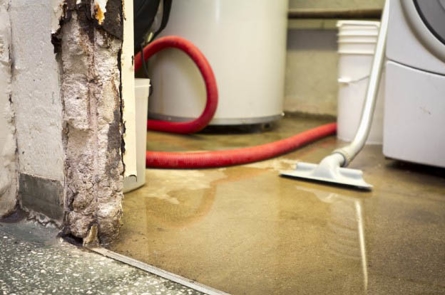
A Guide to Leak Prevention in Commercial Buildings
Commercial buildings, often seen as bustling hubs of business activity, are significant investments that require meticulous care to maintain their structural integrity. One of the most common and potentially damaging issues commercial property owners face is water leaks. Leaks can lead to a cascade of problems, from compromised infrastructure to potential financial setbacks. With proactive measures and a keen eye for possible vulnerabilities, you can safeguard your investment and ensure the longevity of your commercial property. To prevent the worst from happening, use our insights on how to avoid leaks in commercial buildings.
Regular Roof Inspections
Commercial building owners should prioritize routine roof inspections to identify and address potential vulnerabilities. A damaged or aging roof is a common entry point for water, and early detection can prevent extensive damage. Engage with a professional roofing service to conduct thorough inspections and address any issues promptly. Timely repairs and maintenance can significantly extend the lifespan of your roof and minimize the risk of leaks.
Sealant and Waterproofing Applications
Applying high-quality sealants and waterproofing materials to vulnerable areas is a proactive measure that can prevent water intrusion. Focus on sealing joints, cracks, and seams in the building envelope, including windows, doors, and exterior walls. We recommend periodic inspections and reapplications of sealants to ensure their effectiveness over time, especially in high-traffic or exposed areas.
Proper Drainage Systems
Efficient drainage prevents water accumulation, especially in regions prone to heavy rainfall. Regularly inspect and clean gutters, downspouts, and drainage systems to avoid blockages. Ensure water is directed away from the building's foundation, minimizing the risk of leaks and damage. Consider installing additional drainage features, such as French drains, to enhance water diversion capabilities.
HVAC System Maintenance
Heating, ventilation, and air conditioning (HVAC) systems can contribute to leaks if not properly maintained. Regularly inspect and maintain HVAC units, ensuring condensate lines are clear and functioning correctly. Address leaks or condensation issues promptly to prevent water damage to ceilings, walls, and other building components.
Window and Door Maintenance
Windows and doors are potential weak points in a building's envelope. Regularly inspect and maintain window seals, weather stripping, and door thresholds. Ensure these components are in good condition and replace damaged or worn-out materials. Properly sealed windows and doors prevent water infiltration, especially during adverse weather conditions.
In the realm of commercial property ownership, prevention is paramount. Commercial building owners can significantly reduce the risk of leaks by adopting a proactive approach to maintenance and implementing the preventive measures outlined above. Regular inspections, strategic applications of sealants, and vigilant upkeep of building components collectively contribute to the resilience and longevity of your investment. Remember, a stitch in time saves nine, and this saying couldn't be more accurate in the context of commercial property maintenance. The experts at ServiceMaster Restore can help you mitigate any water and property damage that may have occurred and help you reopen your doors quickly. With the proper training, equipment, and experience, our water damage restoration services are here to help you get back to business. Call us today at 1-800-RESPOND.


